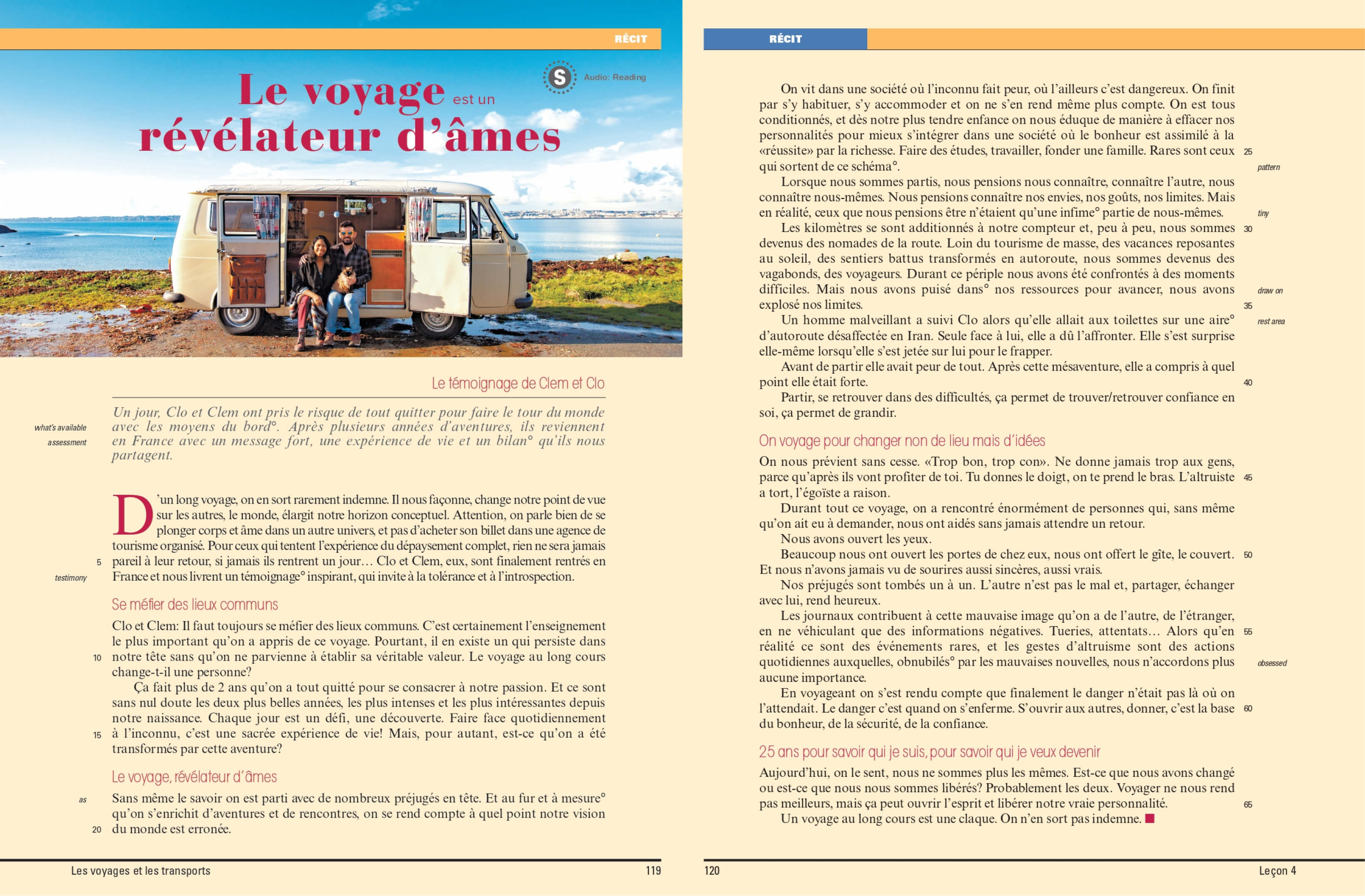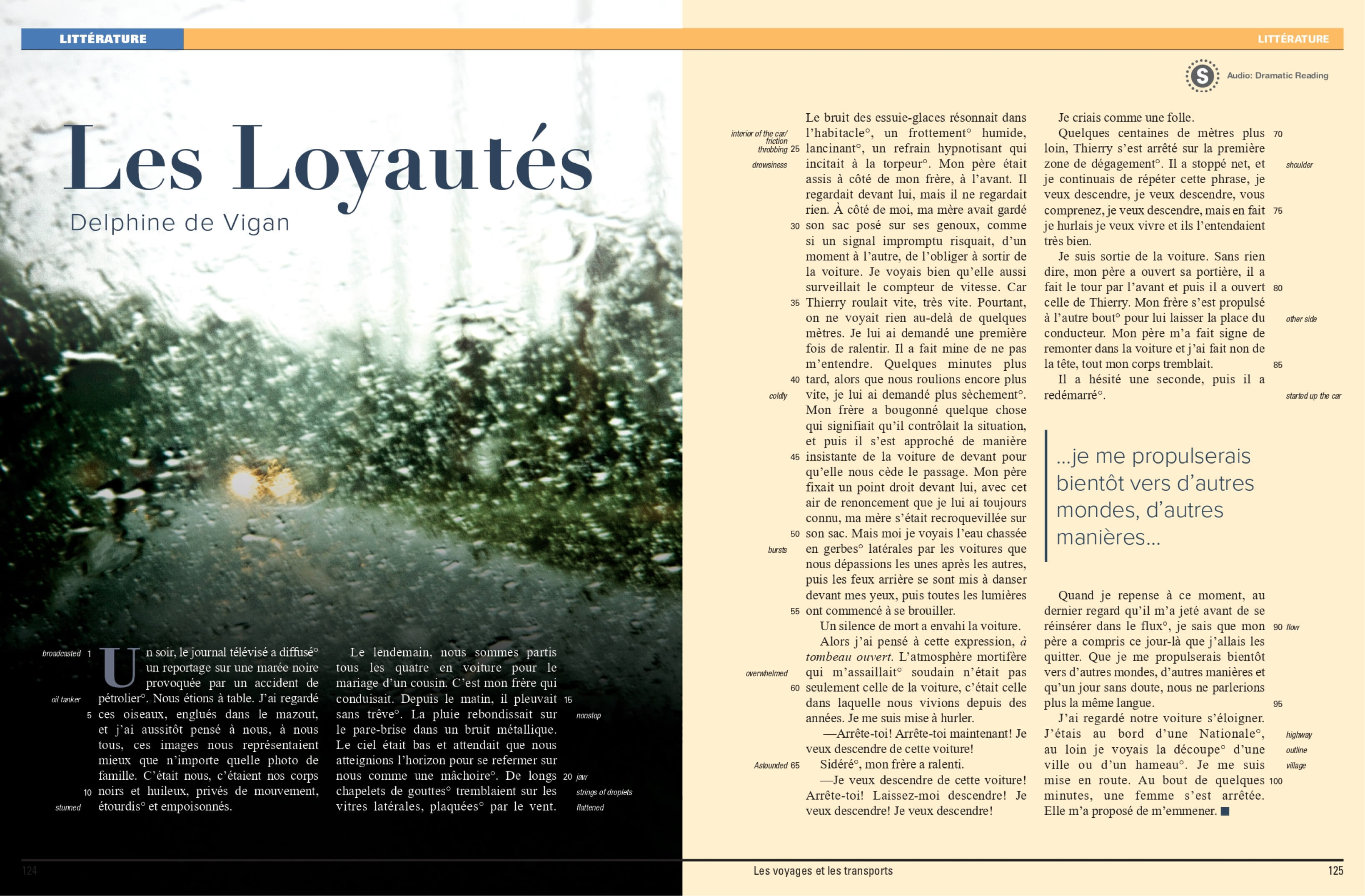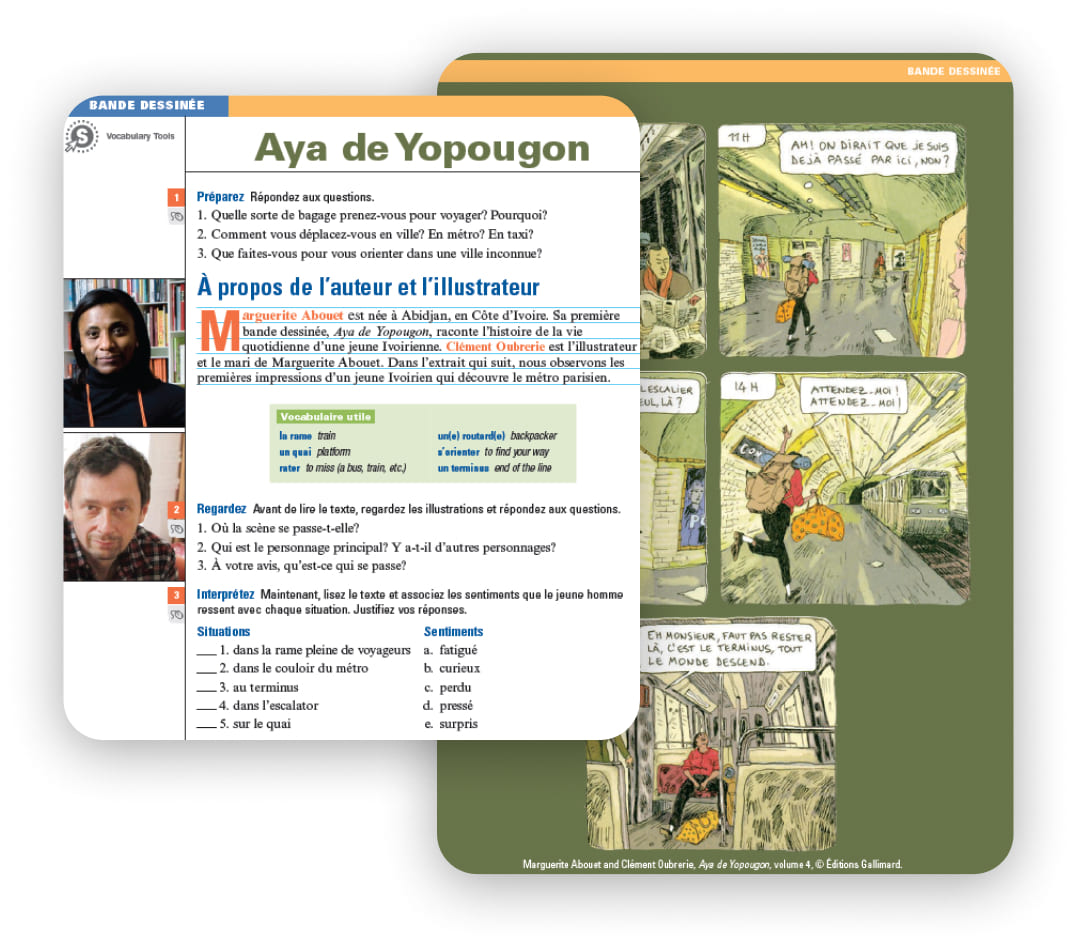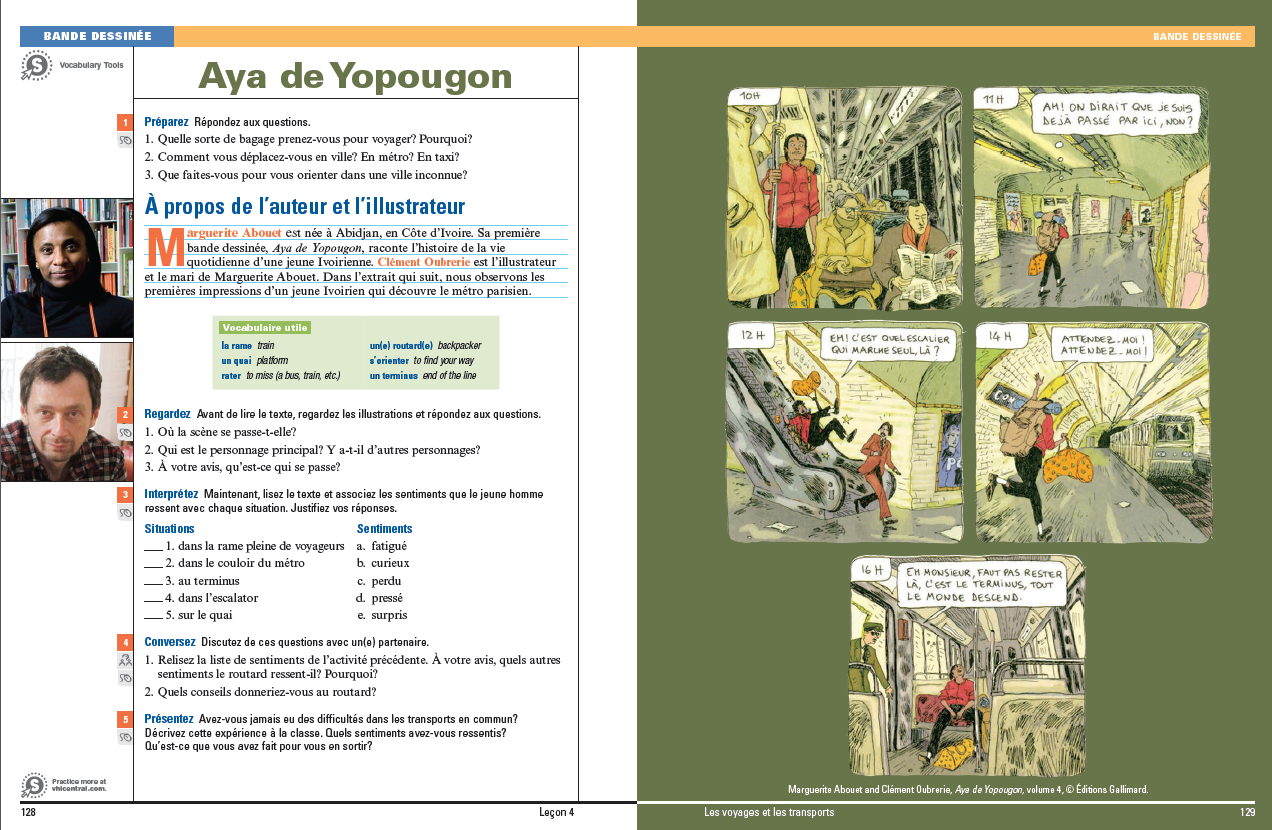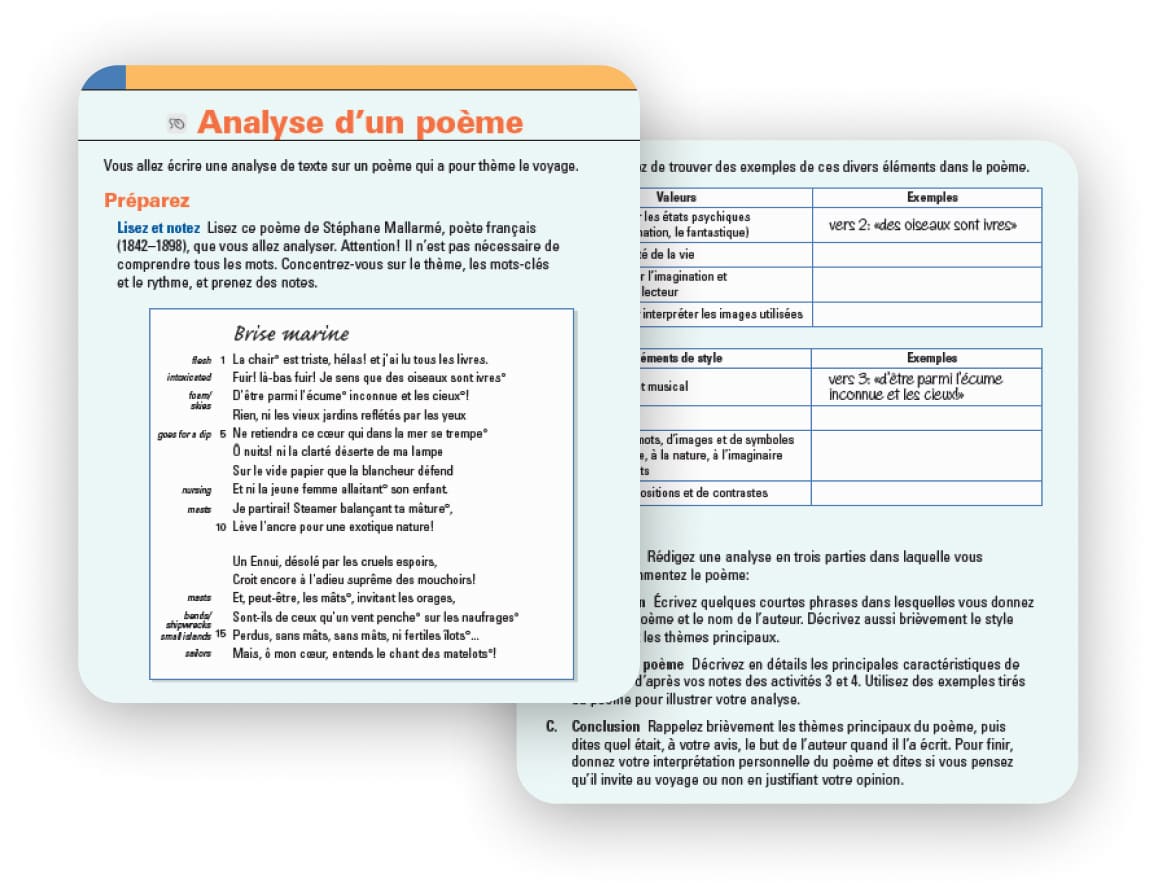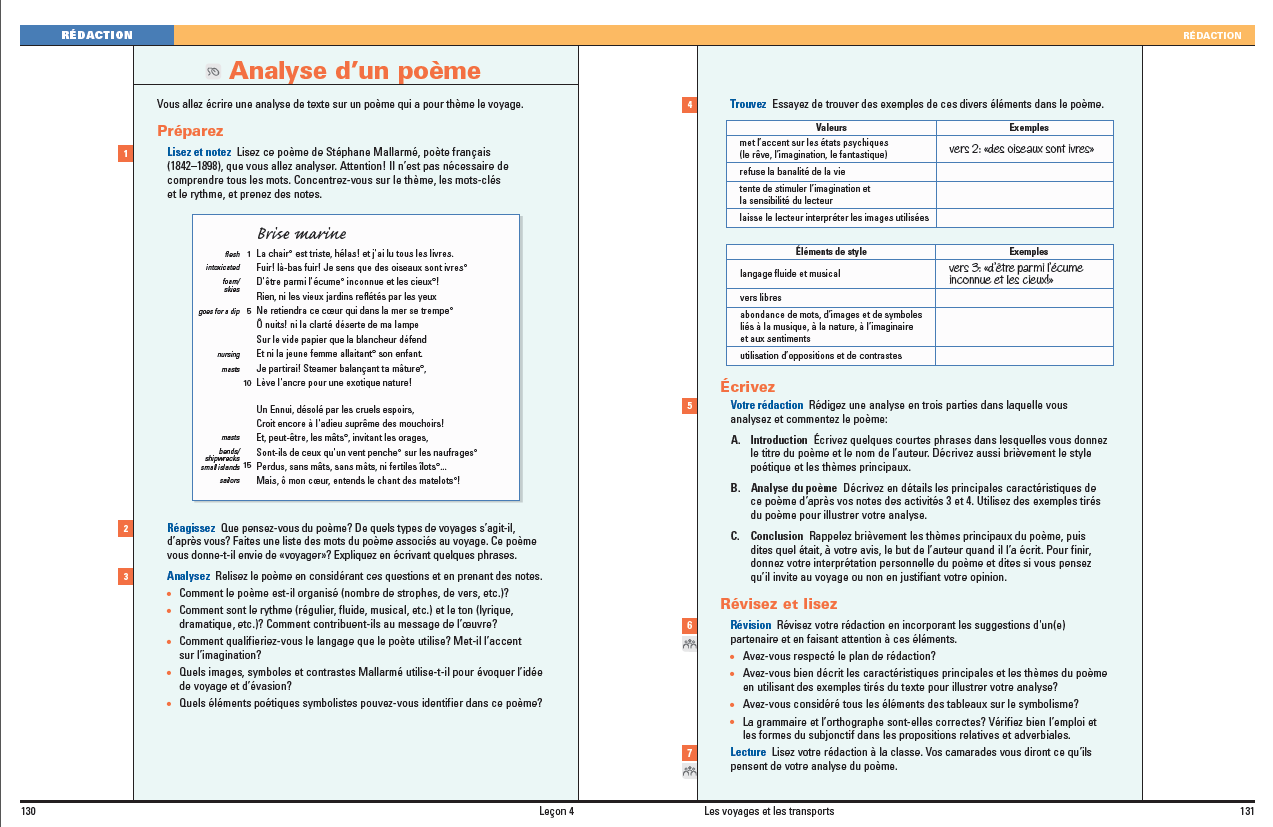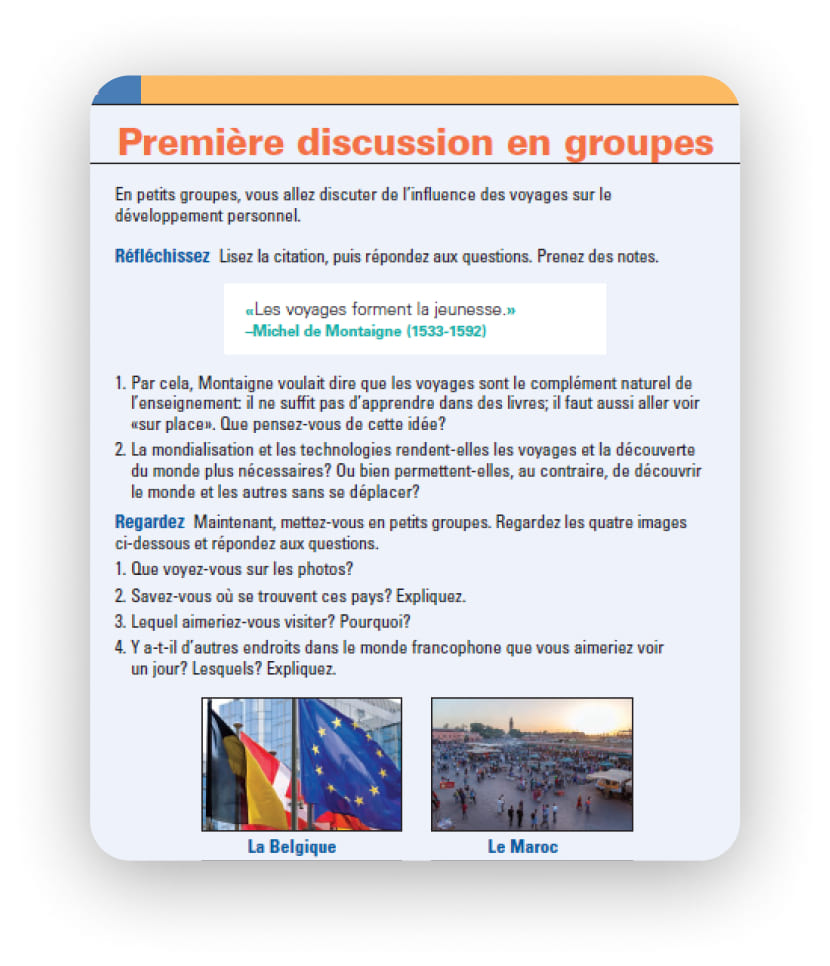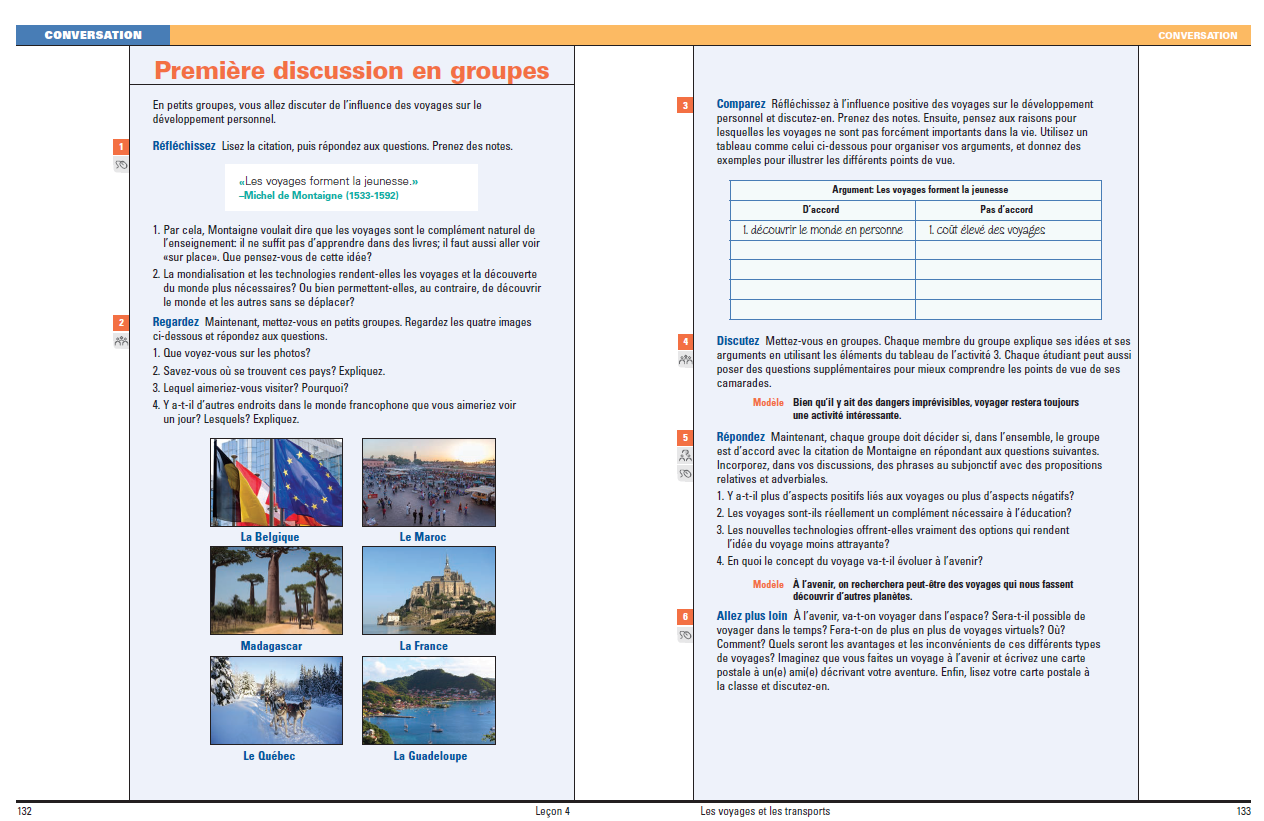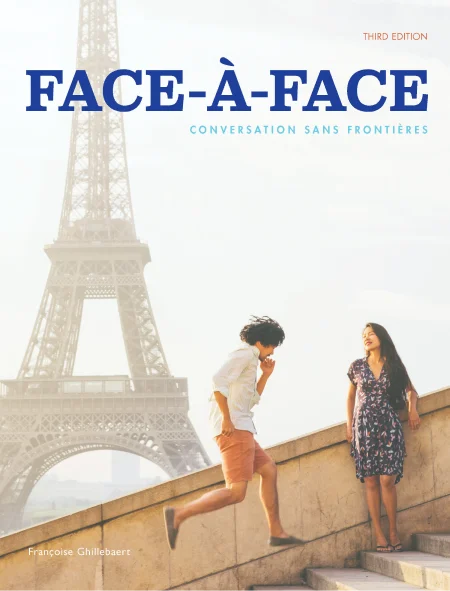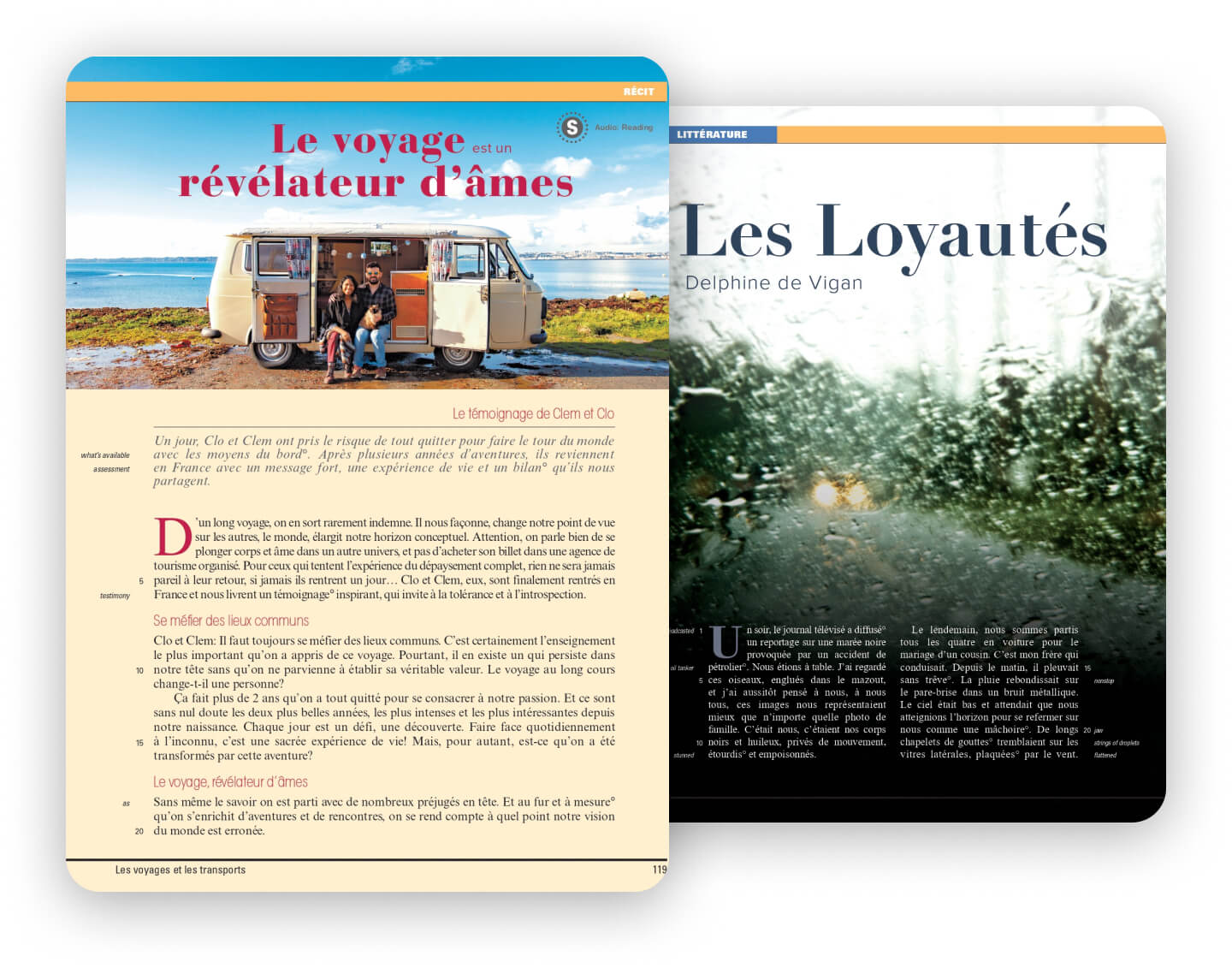
Ignite Curiosity and Conversations through Readings
Face-à-Face offers a rich array of reading selections across various genres, including Essai, Article, Nouvelle, and Récit. These readings are designed to stimulate students' curiosity and evoke emotional responses, ultimately inspiring a strong desire to express themselves in class.
Each selection serves as a springboard for engaging discussions, encouraging students to connect with the material and each other while deepening their understanding of the French language and culture.
